Transform your backyard into a breathtaking oasis with these stunning ground cover ideas! If you’re stumped on how to revamp that neglected patch of land, we’ve got you covered – quite literally.
Whether you’re looking to add some color to a shady spot, fill in gaps between stepping stones, or create a living carpet in your yard, there’s a ground cover plant that’s perfect for the job.
Why You Should Plant Ground Cover

Image credit: YAY Images.
There are a lot of potential benefits that I have experienced firsthand as a gardener. To name a few, ground covers add an aesthetic appeal, protect against soil erosion caused by harsh weather conditions, and make a great weed control method.
Beautiful ground covers can hide an unsightly area or make it a focal point of beauty. Because there are many different types of ground covers, this will appeal to many homeowners.
So Many Choices
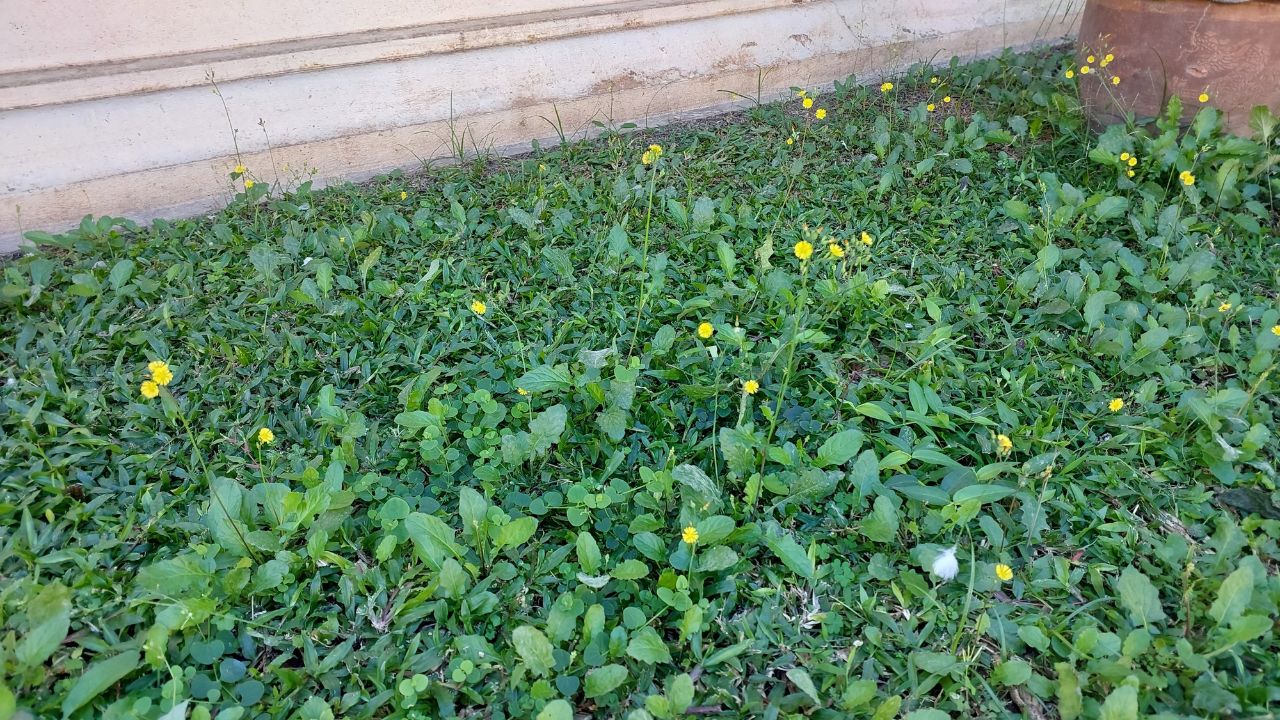
Image Credit: Shutterstock.
Most of the ground covers are grass varieties when they are in the natural environment. That is probably because grasses are so easily spread. But your choices definitely don’t stop there when it comes to your own yard.
Moss is one beautiful option. There is something so elegant and pretty about deep green mosses, which makes them an excellent choice. If you’d rather have a cover with some more depth, you can choose to use low-growing shrubs.
Of course, groundcover plants come in many shapes and sizes, from creeping vines to low-growing shrubs. Some are evergreen and provide year-round interest, while others are deciduous and provide seasonal color.
Got clay soil? Here are 27 plants that make great ground covers for clay soil areas.
Shade Ground Cover Plants
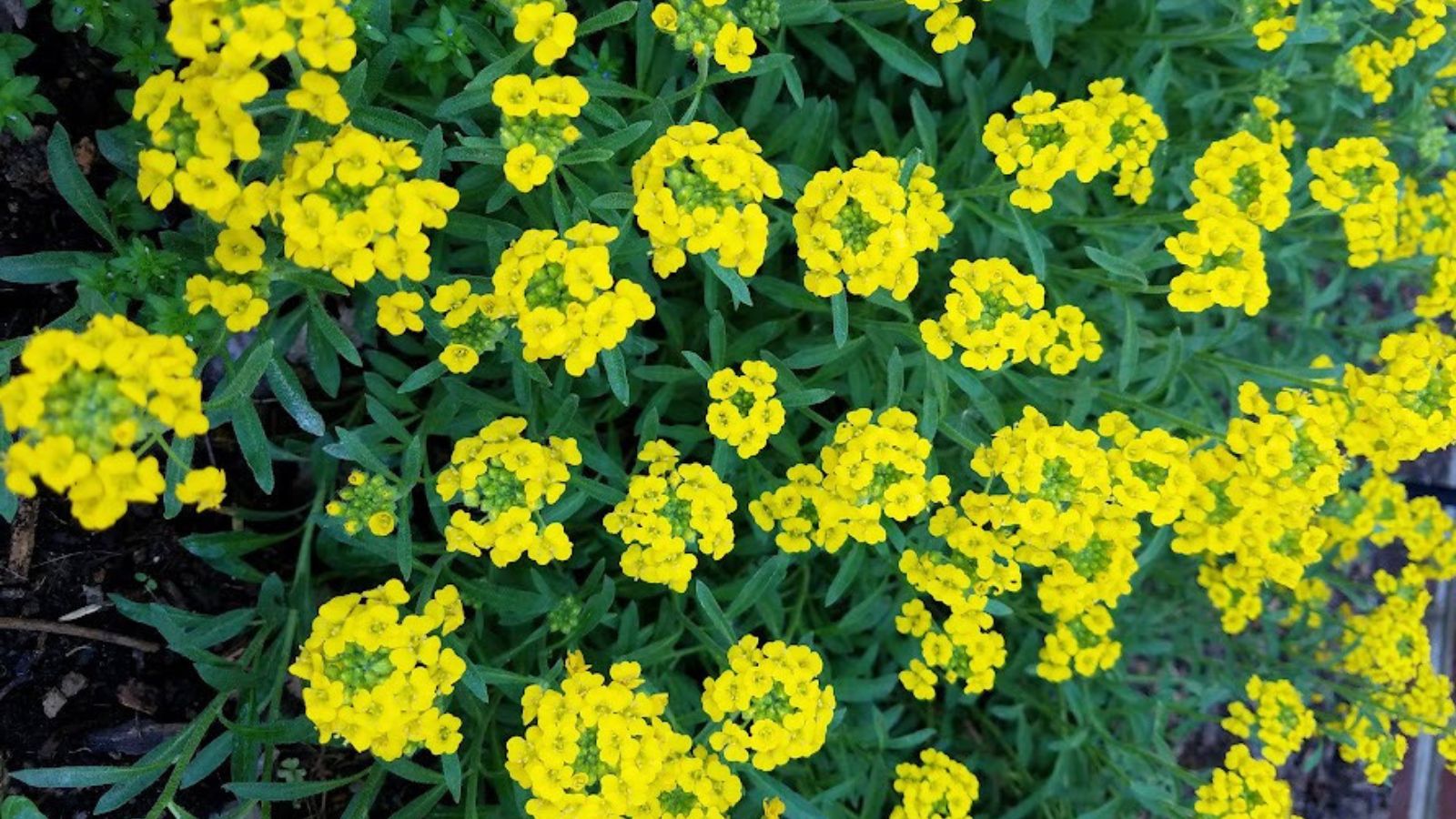
Image credit: Backyard Garden Lover.
Don’t worry if you have a shady backyard: the plants below are some great options for shady spots. And while not all love the deep shade, most will do well with some shade.
When choosing flowering ground cover plants for a shady area, it’s important to consider the amount of sunlight the area receives. Some plants can tolerate some sun, while others, like Lamium, prefer full shade.
It’s also important to consider the soil in the area. Many shade-loving plants prefer moist soil, so if the area tends to be dry, you may need to water more frequently.
Overall, there are plenty of ground cover plants that thrive in shady areas. With a little research and planning, you can create a beautiful, low-maintenance garden that thrives in the shade.
- Asiatic Jasmine (Trachelospermum asiaticum) – zones 7 to 9
- Basket of gold (Alyssum alyssoides) – zones 4 to 7
- Bishop’s hat (Epimedium) – zones 5 to 8
- Bugleweed (Ajuga reptans) zones 4 to 9
- Bunchberry (Cornus canadensis) – zones 2 to 6
- Creeping Juniper (Juniperus horizontalis) – zones 3 to 9
- Creeping Phlox (Phlox stolonifera) – zones 3 to 9
- Creeping Thyme (Thymus serpyllum) – zones 4 to 9
- Dragon’s Blood (Sedum spurium ‘Schorbuser Blut’ ) – zones 3 to 8
- Ice Plant (Aizoaceae) – zones 5 to 10
- Japanese pachysandra (Pachysandra terminalis) – zones 4 to 8
- Sweet woodruff (Galium odoratum) – zones 4 to 9
- Vancouveria (Vancouveria hexandra) – zones 5 to 8
- Wild ginger (Asarum) – zones 4 to 8
- Yellow archangel (Lamium galeobdolon) – zones 4 to 9
Ground Cover Plants for Full Sun

Image credit: YAY Images.
There are plenty of options to choose from if your yard gets full sun, too. Here are some of the best ground cover plants that thrive in full sun:
- Blue star creeper (Isotoma fluviatilis) – zones 6 to 9
- California lilac (Ceanothus) – zones 8 to 10
- Common manzanita (Arctostaphylos) – zones 8 to 10
- Golden storksbill (Erodium chrysanthum) – zones 4 to 9
- Irish moss (Sagina subulata) – zones 4 to 8
- Miniature daisy (Bellium minutum) – zones 5 to 9
- Mountain sandwort (Arenaria montana) – zones 4 to 8
- Plumbago (Ceratostigma plumbaginoides) – zones 8 to 11
- Rockspray cotoneaster (Cotoneaster horizontalis) – zones 5 to 7
- Shrubby cinquefoil (Potentilla fruticosa) zones 3 to 7
- Silver carpet (Dymondia margaretae) – zones 4 to 8
- Snow in summer (Cerastium tomentosum) – zones 3 to 7
- St. John’s Wort (Hypericum) – zones 5 to 9
- Veronica (Speedwell) -zones 3 -11
When choosing ground cover plants for full sun, make sure to look into the soil type, moisture levels, and climate, and select plants that are well-suited to your specific growing conditions.
With the right ground cover plants, you can create a beautiful, low-maintenance landscape that thrives in full sun. Consider incorporating some of these plants into your garden for a vibrant and colorful display.
Perennial Ground Covers
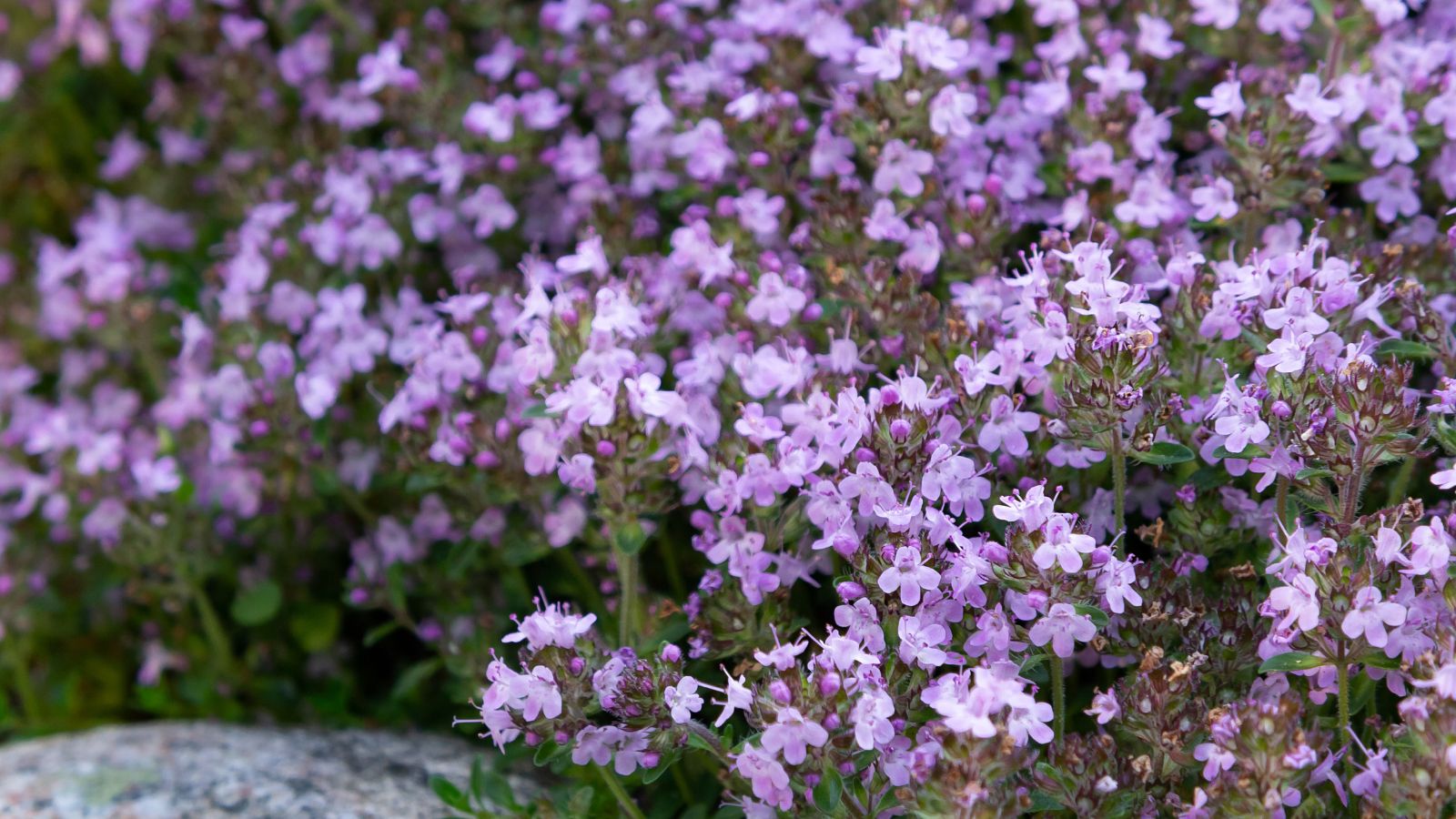
Image credit: YAY Images.
If you’re looking for a low-maintenance ground cover that will come back year after year, consider planting perennial plants. Here are some of the more popular ground cover perennials:
- Creeping thyme: This fragrant herb is a popular choice for ground cover. It’s drought-tolerant and produces small pink or purple flowers in the summer.
- Creeping phlox: With its bright, colorful flowers, creeping phlox is a great way to add some color to your garden. It’s also a good option for erosion control on slopes.
- Creeping Jenny: This low-growing plant has bright green leaves and produces small yellow flowers in the summer. It’s a good choice for wet areas and can even be planted in shallow water.
Ground Cover Vines
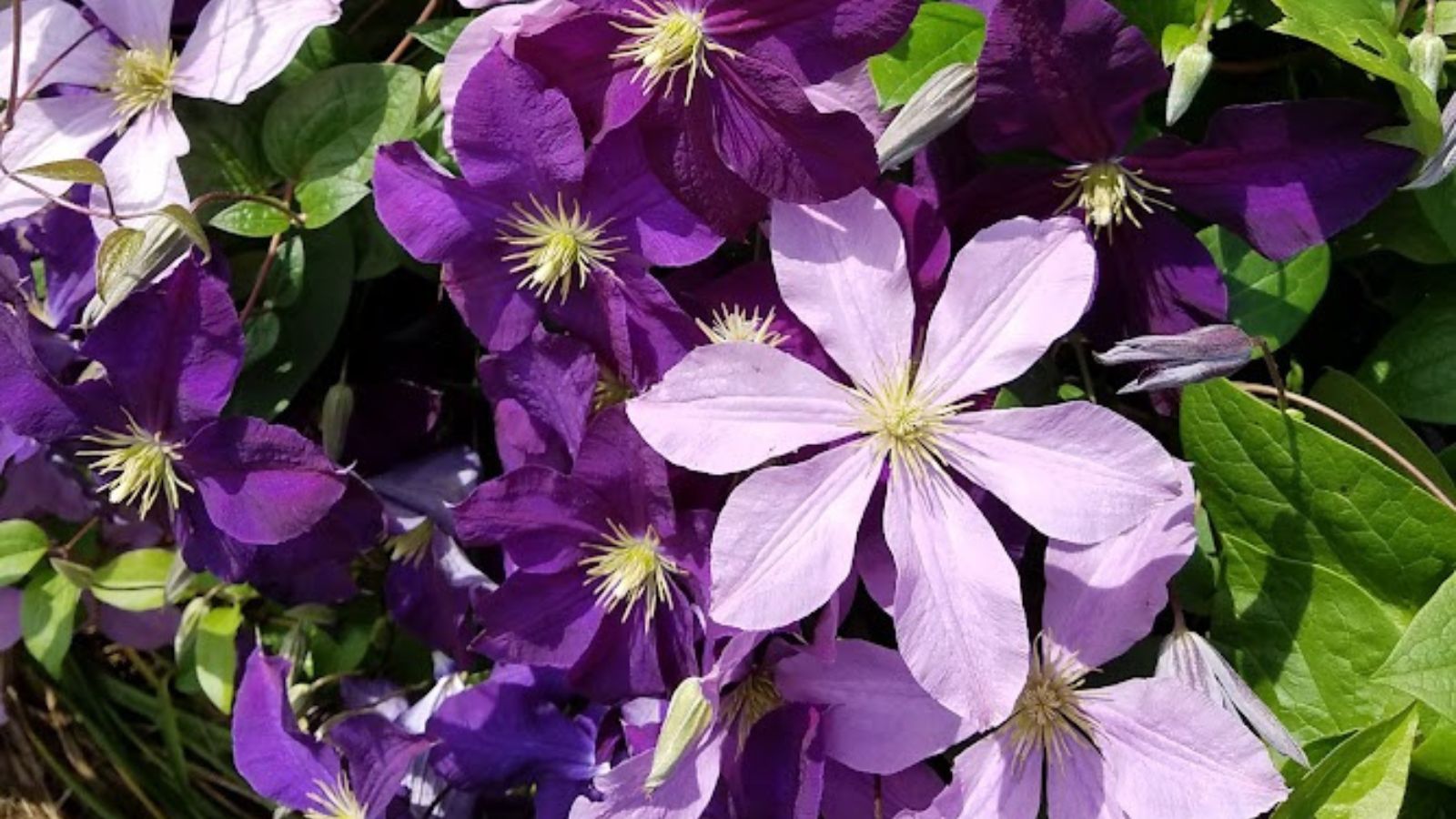
Image credit: Backyard Garden Lover.
If you’re looking for a ground cover that can also add height and texture to your garden, vines might be a better option.
- English Ivy: This evergreen vine is a classic choice for ground cover. It grows quickly and can climb walls or trees, but can also be trained to stay low to the ground. It prefers shade and moist soil. But be careful, as this is an invasive species, so you might want to plant it in containers.
- Clematis: This flowering vine comes in a variety of colors and can be trained to grow along the ground or up a trellis. It prefers full sun to partial shade and well-drained soil. I love the bright color in the image above!
- Honeysuckle: Another fragrant option, honeysuckle, can be used as a ground cover or trained to climb. It prefers full sun to partial shade and well-drained soil. This can also be invasive, so make sure to check if it is in your area. Learn about growing honeysuckle.
When choosing a vine for ground cover, be sure to consider its growth habit and how it will fit into your overall garden design. Some vines can be invasive, so it’s important to choose a variety that won’t take over your entire yard.
It’s also important to provide support for your vines, whether it’s a trellis, fence, or other structure. This will help them grow in the direction you want and prevent them from becoming tangled or damaged.
Finally, be sure to prune your vines regularly to keep them under control and encourage healthy growth. This will also help prevent them from becoming too woody or overgrown.
Landscaping with Ground Cover Plants

Image credit: YAY Images.
Ground cover plants are an excellent way to add texture, color, and interest to your landscaping. They can be used to fill in empty spaces, control erosion, and create a lush, green look.
Here are some ideas for using ground cover plants in your landscaping:
- Use ground covers to replace grass in areas difficult to mow, such as slopes or shady areas.
- Plant ground cover plants around trees to create a natural-looking border and prevent weeds from growing.
- Combine low-growing plants with taller ones, and add colorful and fragrant flowers to create an interesting look and feel. For example, you could combine low-growing flowers with ferns or ornamental grasses.
- Use an evergreen ground cover to create a natural-looking pathway. Trim regularly to create a dense, low-growing carpet.
- In large areas, create a mass planting of the flowers. Just imagine a mass of blue flowers (try lobelia for this), bright pink mounds of phlox, or a hill of yellow alyssums.
When choosing ground cover plants, consider the amount of sun or shade in the area, as well as the type of soil. Some ground cover plants prefer moist soil, while others prefer well-drained soil. Here are some low-maintenance ground cover plants that are suitable for a variety of growing conditions:
Remember to choose ground cover plants that are appropriate for your specific growing conditions and landscaping needs. With a little planning and creativity, you can create a beautiful and low-maintenance landscape using ground cover plants.
Low-Maintenance Ground Cover Ideas

Image credit: Depositphotos.
Ground cover plants are a great way to add color and texture to your garden while also reducing the amount of maintenance required. Here are some low-maintenance ground cover ideas to consider:
- Sedum – a popular choice for ground cover, this succulent requires very little water and can tolerate a wide range of soil conditions. Sedum comes in a variety of colors and can be used to create a beautiful, low-maintenance garden.
- Creeping thyme: a fragrant herb that is a great option for sunny areas and is often used as a ground cover in rock gardens. Creeping thyme requires very little water and can be easily trimmed to maintain its shape.
- Creeping Jenny: a low-growing plant with bright green leaves that can be used to create a lush, carpet-like effect in your garden. Creeping Jenny prefers moist soil and partial shade, making it a great option for areas that don’t get a lot of sun.
- Moss – Moss requires little to no maintenance and can add a beautiful green carpet to shaded areas. It also helps to retain moisture in the soil and is great for erosion control.
- Vinca minor – a hardy evergreen plant, great for shady areas, and requires little to no maintenance. It spreads quickly and produces beautiful, blue, attractive flowers in the spring.
- Clover – a low-maintenance ground cover that is great for sunny areas. It fixes nitrogen in the soil, which can help to improve soil health and fertility. It also produces beautiful white or pink flowers in the summer.
Ground Cover Ideas With Pictures (Specific Options)
Now, let’s check out the inexpensive ground cover ideas below: it’s so much fun to see how others have used ground covers to beautify their properties.
1. Creeping Phlox (Phlox stolonifera)

Image credit: Backyard Garden Lover.
Creeping phlox is a great ground cover that is easy to grow in sunny and shady locations. Here’s how to plant creeping phlox. This low-growing plant requires little maintenance and grows so thick that it doesn’t allow any weed growth.
2. Moss (Bryophyta)

Image credit: YAY Images.
Landscaping stony areas in your backyard is not easy, and moss is a great alternative. Or, moss-covered old tree stumps moss helps make them more part of the scenery.
3. Periwinkle (Catharanthus roseus)
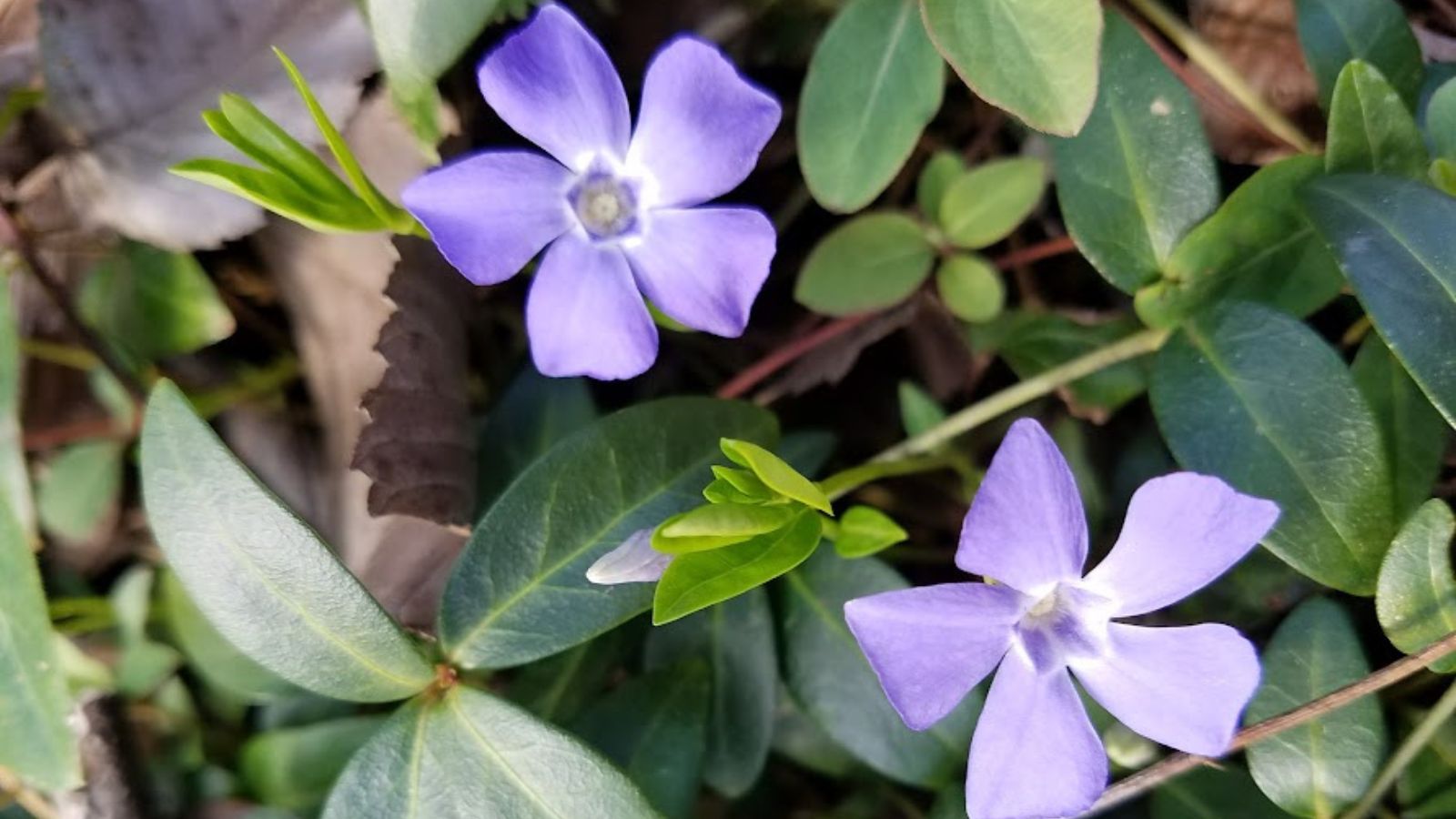
Image credit: Backyard Garden Lover.
Periwinkle is a fast-growing plant with solitary violet flowers at the end of the stem: a beautiful ground cover that thrives in the shade provided by wooded areas! Here are more shade-loving plants!
Vinca plants have an aggressive nature and can be invasive if you aren’t careful. Here’s how to get rid of the periwinkle ground cover if it has taken over your yard.
4. Chameleon Plant (Houttuynia Cordata)

Image credit: YAY Images.
The chameleon plant, also called Fish leaf, Rainbow plant, Heart leaf, Fish wort, and Chinese lizard tail, features boldly variegated heart-shaped leaves.
5. Blue Cardinal Flower (Lobelia siphilitica)

Image credit: Backyard Garden Lover.
Lobelia has beautiful, tiny flowers in sky blue, dark blue, white, and rose pink colors. An easy-to-grow plant that is a lovely addition to any yard!
6. Bishop’s Hat (Epimedium)

Image credit: YAY Images.
Bishop’s hat, also known as barrenwort, fairy wings, or horny goat weed, has adorable tiny flowers atop pointed green leaves with red edging. They are perfect for wooded and shaded areas.
7. Veronica (Speedwell)

Image credit: YAY Images.
Veronica is a versatile ground cover plant perfect for filling gaps in your garden or landscaping. It is a low-growing plant that typically reaches a height of 6-12 inches and spreads quickly to form a dense mat.
The leaves are small, lance-shaped, and glossy green, and the flowers are small and delicate and come in shades of blue, purple, pink, or white, depending on the variety.
There are many more options for beautiful ground covers, but I hope these ideas have inspired you to find the perfect one for your backyard.
A few more of my favorites include Lily of the Valley, Dead Nettle, and Coral Bells.
How To Care For Your Ground Cover

Image Credit: Shutterstock.
It is important to keep in mind that the things you choose will have different levels of maintenance. For example, moss doesn’t really require you to do much at all, while certain low-growing shrubs would need constant care and attention.
If you love being outside and doing yard work, this shouldn’t be a problem for you. If you are more hands-off, it’s definitely something you need to take into consideration.
Ground covers are great for hiding a patch of land you can’t seem to do anything else with or for adding an element of great design to your backyard.
I hope you found one or more plants you can use as ground covers on your property. There are plants from early spring to late summer and every other growing season. I encourage you to find some native ground covers if you can. Learn about native plants and how they help keep our environment healthy.

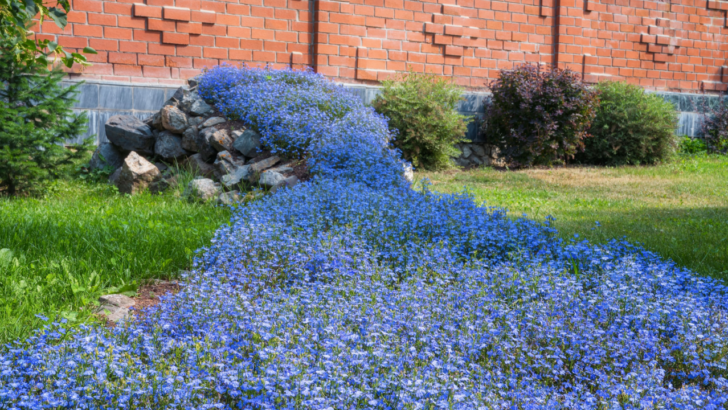

10 Woodland Shade Garden Ideas To Transform Your Tree-Filled Yard
Monday 14th of August 2023
[…] the space feels overwhelming, some low-growing, shade-loving groundcovers or small evergreen plants can replace some of the lawn, especially on steep slopes that pose a […]
9 Easy DIY Landscaping Ideas For A Beautiful Yard
Thursday 3rd of August 2023
[…] between evergreen and deciduous trees and shrubs, perennial flowers, ornamental grasses, vines, ground covers, herbs, bulbs, and annuals, using more of the latter, smaller items, and fewer of the larger […]
North Dakota Native Plants List: 12 Amazing Garden Plants
Saturday 10th of June 2023
[…] summer and bloom at the very top of the stems, facing upward. This also makes a great choice for an attractive ground cover. It’s very low maintenance and easy to care […]
8 Kingly Flowers That Start With K
Saturday 10th of June 2023
[…] from low-growing groundcovers to 32-foot trees, kunzeas will fit in nearly every garden theme. They produce white, yellow, or […]
8 Most Common Invasive Plants In Minnesota (And 16 Beautiful Native Alternatives)
Tuesday 6th of June 2023
[…] ginger (Asarum canadense) provides ground cover with similar foliage, and bloodroot (Sanguinaria canadensis) produces showy, white spring […]